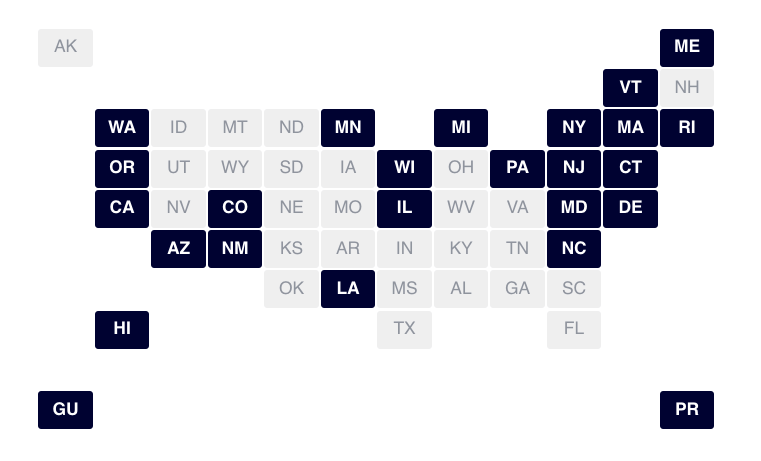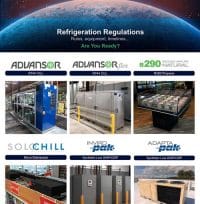
The California Air Resource Board (CARB) is an organization entrusted with educating and safeguarding communities from the harmful effects of air pollution and develops programs that combat climate change.
Like California, many states have instituted environmental regulations to help limit the amount of short-lived climate pollutants (SLCPs), like HFCs, into the environment. However, its CARB that has led the charge and has driven innovation that has led to developments in cleaner fuels and low- and zero emission vehicles. Their work extends into an effort to further reduce HFC emissions by 40 percent by 2030, and they have proposed an ambitious second phase of regulations that will significantly impact the commercial refrigeration industry.
Get ready! Other states are following California’s actions.
California has been the leader in instituting rules and regulations that support the protection of the environment, but many states have followed suit and are likely to adopt similar regulations. The U.S. Climate Alliance, which was established in 2017, is a bipartisan coalition of governors committed to reducing greenhouse gas emissions. What was once a commitment of 16 states and Puerto Rico has grown to 25 members, representing 55 percent of the U.S. population. This Alliance has pledged to implement policies aiming to reduce greenhouse gas emissions, track and report their progress and facilitate new and existing policies to reduce emissions and promote clean energy deployment.

Map courtesy of Emerson.
Additional Resources
CARB – The Refrigerant Management Program (RMP) requires facilities with refrigeration systems containing more than 50 pounds of high-GWP refrigerant to conduct and report periodic leak inspections, promptly repair leaks; and keep service records on site. The regulation also requires service practices intended to minimize refrigerant emissions. Read More>
- CARB Service Technicians
- CARB Distributors/Wholesalers and Reclaimers
- CARB Rules for Businesses with Refrigeration Systems
- SNAP Substitutes in Refrigeration and Air Conditioning
- SNAP Regulations including Rules 19-23
- Questions and Answers About SNAP Alternatives
- EPA Ozone-Depleting Substances – This page provides information on compounds recognized as ozone-depleting substances (ODS) under the Montreal Protocol.
- EPA Stationary Refrigeration Leak Repair Requirements including Section 608 of the Clean Air Act.
- DOE Compliance Certification Database Walk-In Coolers and Freezers – Doors
- DOE Energy Conservation Standards for Walk-in Cooler and Freezer Refrigeration Systems; Final Rule
